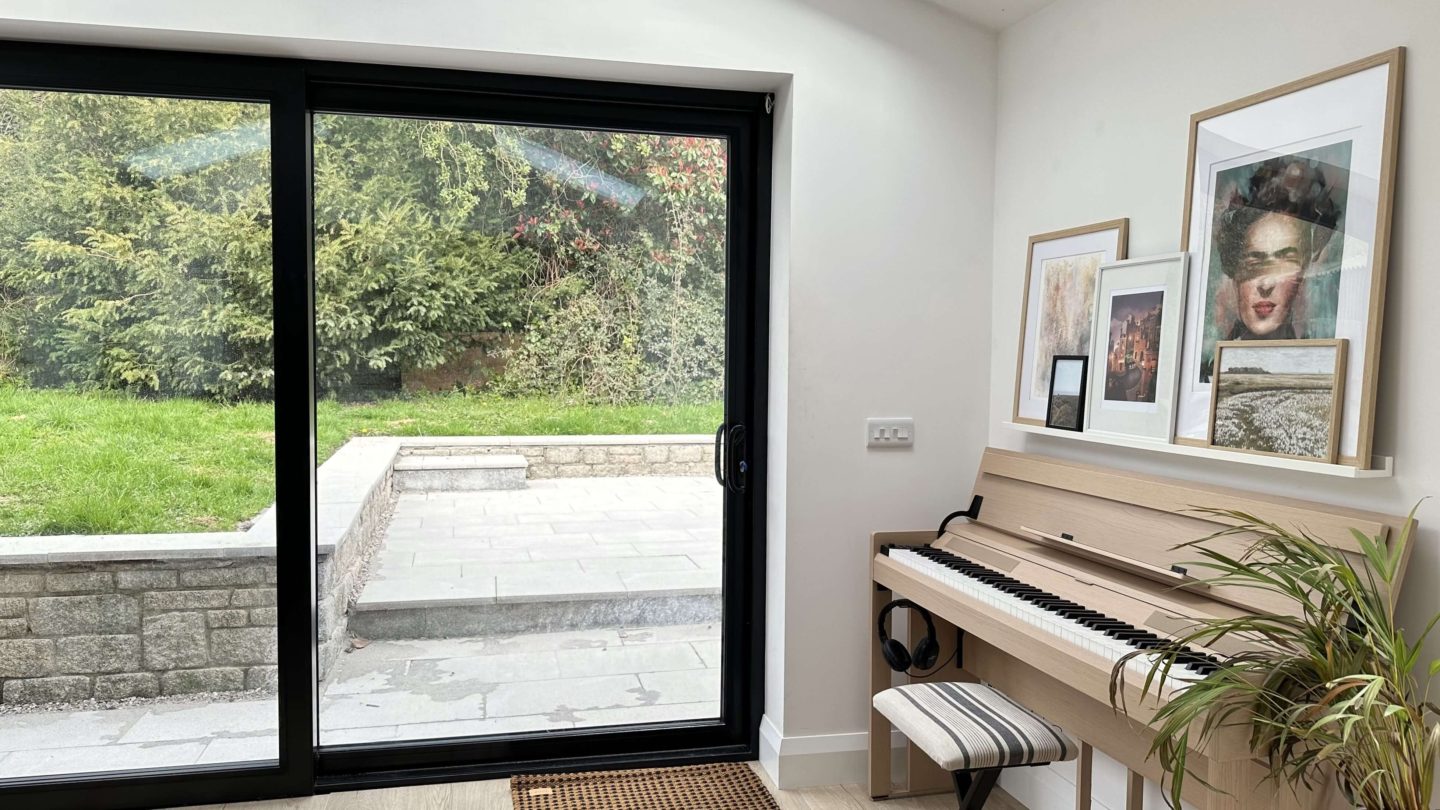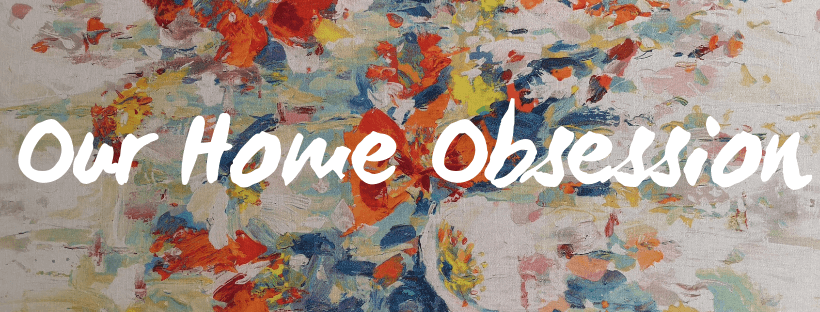
You’ve decided you’re adding a garden patio to your house. You’ve worked out the size and layout and your next step is deciding which of the patio materials to use. There are a couple of things to consider. If you’re like us, the most important factor was cost. Not only do you need to think about how much it costs to buy the materials, but which materials cost more to install. Another thing to think about is the how it needs to be maintained. In Ireland, with all our rain, this is a big one!
Here is a list of the most popular patio materials used:
- Stone pavers
- Gravel
- Porcelain tiles
- Bricks and cobbles
- Concrete
When we designed our own garden, I looked into all of these patio materials. (You know my need for over-researching!! 😉) So read on for some pros and cons of each, to help you make a decision!
Stone Pavers
Limestone and sandstone would be the two most popular stone pavers. They can be sawn cut for clean line, which is more modern. (And my preferred choice!) Or the more traditional riven cut, which is less uniform and more ‘bumpy’. Below you can see clean cut stone on the right, riven cut on the left. Which do you prefer?
Sandstone is porous, so it will require higher maintenance. It will stain easily, so if something does spill on it, you should wipe it up! There can also be a big variation in colour, especially in the cheaper Indian sandstone.
Limestone is such a beautiful stone. It comes in pale yellow, pale grey or darker grey. There is less variation in colour, but it’s still a natural stone so the colour won’t be completely uniform – you might even see some fossils in your stone! (Great if you like that sort of thing!) It’s more durable than sandstone, but it can still stain.
Gravel

A gravel patio is probably the most cost effective of them all! There are lots of different types and colours and it’s so easy to install! But as with everything, there are cons too. The main one being that to keep it looking great, it can be difficult to maintain. Unless a barrier is put down underneath, weeds can grow rapidly. It’s easily moved – so high traffic areas or pets can cause gravel to gather in lumps or travel to other areas. Keeping light coloured gravel clean looking can be tricky, especially if it’s in shade where there is a change of green algae growing. I know personally, I do find it annoying sitting on furniture that’s on gravel, but I absolutely love the look of it!
Porcelain
Porcelain has become so popular in recent years and there are a few reasons why! The tiles themselves are a cheaper option than natural stone and there is a huge amount of choice! Make sure to buy ones that are 20mm in thickness, as anything less may not be strong enough. If a uniform colour is important to you, than porcelain is a great choice. Every tile is identical – IF YOU BUY IN THE SAME BATCH. With porcelain tile, there is often the option to have the same look tile inside and outside your house. This allows your home to flow nicely out to the garden patio. Plus it’s perhaps the lowest maintenance of all your choices!
Now, just to be aware, porcelain tile can be expensive to lay. You need to hire someone with experience in laying porcelain tile, as cutting them incorrectly can lead to a lot of wastage. When we spoke to landscapers, most of them would only lay porcelain tiles that they could source themselves – so keep this in mind before you buy these tiles without organising a landscaper first! It’s also worth noting that the outdoor adhesive used in laying the tiles should experience freezing conditions for a few weeks after installation. So it’s best to wait until after St. Patrick’s Day to lay porcelain tiles! One final tip…make sure it has an anti-slip rating of at least R11. The best being R13.
Bricks and Cobbles
Clay bricks come in a huge variety of colours. Harder to cut than other block pavers, so hiring someone can be costly. But they are a classic option and can last for decades. The colour is solid throughout the brick, meaning it’s ideal for edges and steps etc where the side of the brick is seen. Another huge advantage of clay pavers is that they can be lain in a variety of patterns. Love a herringbone pattern!! Weed killer treatment is needed twice a year to stop weeds coming up in between the bricks. And finally, be aware that using a pressure washer can be damaging to these bricks, so limit it to once a year!
Concrete


Concrete comes in many forms suitable for a garden patio. While poured concrete was a tradition here in Ireland, we are now moving away from that in favour of something more decorative. Stamped concrete, which you can see above is a great alternative. Concrete is poured in sections and stamped with a pattern before it dries. There are many stains which you can add to the concrete to get the colour you want. Make sure you hire a professional for this, as it’s pretty much impossible to fix if it’s been finished incorrectly.
Our own patio was made using concrete pavers. Not as nice looking as natural stone of course, but much easier to maintain and great if you are on a budget! I love it so much more than I thought I would! The light grey looks almost white in the sun, which is exactly what I was looking for. Plus, a quick powerwash brings them back to looking like new!
The final one I’m going to talk about is sandblasted concrete. I don’t know a lot about it, but I spotted it in the Bloom Festival last year. It was part of the overall winning garden, which you can see above, and it looked so beautiful!
Which of the patio materials is your favourite?
Well, we’ve gone through a lot of options there for your garden patio. Which one is your favourite? If money was no object, I think I’d love a mix of limestone and gravel. It’s such a gorgeous combo!



